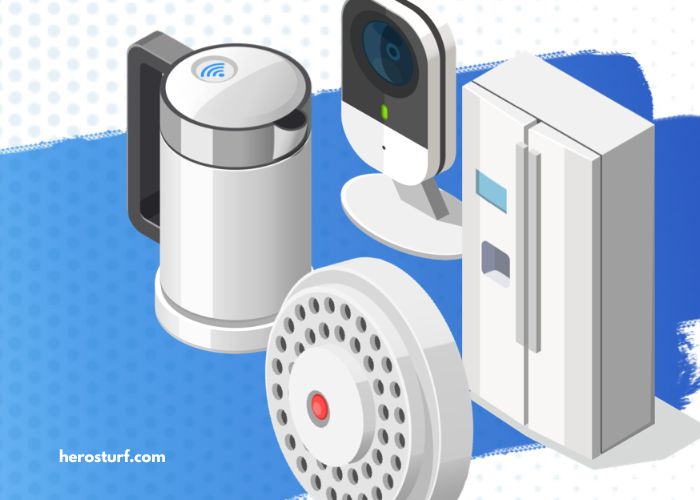Smart Devices Transforming Daily Life in 2025
In 2025, smart devices are no longer a luxury—they are a necessity. From our homes to our workplaces, and even our personal well-being, smart technology is seamlessly integrated into every aspect of our daily lives. The rapid evolution of artificial intelligence (AI), the Internet of Things (IoT), and 5G connectivity has ushered in a new era of convenience, efficiency, and personalization.
In this article, we explore how smart devices are transforming our routines, enhancing productivity, improving health, and shaping the future of connected living in 2025.
The Rise of Smart Technology in Everyday Life
Seamless Integration of IoT in Daily Routines
The Internet of Things (IoT) has matured to a point where everyday objects—from refrigerators to doorbells—are connected and interactive. Smart home ecosystems now operate as cohesive units, automating routines like turning off lights, adjusting thermostats, and locking doors.
Devices like Amazon Alexa, Google Nest, and Apple HomeKit have expanded into comprehensive platforms that communicate with a wide variety of sensors and gadgets, enabling hands-free control and predictive automation.
AI and Machine Learning Powering Personalization
AI is the brain behind many smart devices in 2025. By continuously learning from user behavior, preferences, and environmental factors, AI-driven devices can deliver highly personalized experiences. Whether it’s a smart mirror recommending outfits based on the weather or a virtual assistant curating your daily schedule, AI is redefining convenience.
Smart Homes: The Foundation of Future Living
Intelligent Climate Control and Energy Efficiency
Smart thermostats in 2025 do more than regulate temperature—they analyze your lifestyle patterns, detect occupancy, and even adjust based on external weather conditions. Brands like Ecobee and Nest have introduced features that save energy without compromising comfort.
Smart lighting systems with ambient sensors now adjust brightness and color temperature throughout the day, supporting both mood and circadian rhythms.
Security and Surveillance Like Never Before
Home security has become smarter and more proactive. Facial recognition cameras, motion-detecting doorbells, and AI-powered alarm systems provide real-time alerts and even communicate with local authorities if needed.
Advanced video analytics allow smart systems to differentiate between harmless movements (like a pet) and potential threats, reducing false alarms and enhancing peace of mind.
Smart Kitchens with Culinary Intelligence
Refrigerators now suggest recipes based on available ingredients, track expiry dates, and automatically reorder groceries. Smart ovens recognize the type of food and adjust cooking times accordingly, while AI-powered kitchen assistants guide users through complex recipes with real-time video support.
Smart Health and Wellness Devices
Wearables That Go Beyond Fitness Tracking
Smartwatches and fitness bands have evolved into comprehensive health monitoring systems. In 2025, these devices monitor heart rate, sleep patterns, stress levels, oxygen saturation, and even detect early signs of illnesses.
Wearables now offer ECG features, blood pressure monitoring, and glucose tracking, empowering users to manage chronic conditions effectively.
AI-Powered Personal Health Assistants
Virtual health assistants use real-time data to provide personalized advice, medication reminders, and mental health support. These assistants can integrate with telehealth platforms, allowing seamless communication with healthcare providers.
Smart Toilets and Bathroom Innovations
Bathroom technology has seen significant upgrades. Smart toilets in 2025 analyze waste for signs of illness, hydration levels, and nutrition deficiencies, offering feedback through a companion app. Smart mirrors display health stats, weather updates, and skincare analysis to help users start their day informed.
Smart Workplaces and Productivity Tools
AI-Driven Workspaces
Office spaces are now equipped with sensors that optimize lighting, air quality, and noise levels based on the number of people and their preferences. Smart desks adjust height automatically and suggest breaks to reduce strain.
AI-driven scheduling tools analyze team availability, suggest optimal meeting times, and even draft follow-up emails based on meeting notes.
Remote Collaboration Made Smarter
The remote work revolution has led to smarter communication platforms. Tools like Microsoft Teams and Zoom now feature real-time translation, facial recognition for attendance, and AI-based meeting summaries, making cross-border collaboration seamless.
Smart whiteboards and augmented reality tools allow teams to brainstorm and prototype in virtual environments as if they were in the same room.
Smart Mobility and Transportation
Self-Driving Vehicles with Integrated Smart Features
Autonomous vehicles are more prevalent in 2025. These smart cars are equipped with AI navigation, voice-controlled entertainment, and predictive maintenance systems. They interact with city infrastructure to reduce congestion and improve fuel efficiency.
Electric vehicles (EVs) have become smarter, with auto-charging capabilities, dynamic route planning, and remote diagnostics that prevent breakdowns.
Smart Public Transportation
Cities are implementing AI-powered public transit systems with real-time route optimization, facial recognition entry systems, and dynamic scheduling. Passengers can track buses and trains with pinpoint accuracy and receive delay notifications instantly.
Smart Cities: Building Urban Efficiency
AI-Powered Infrastructure and Utilities
In 2025, cities are utilizing smart grids that balance electricity distribution based on demand, weather, and renewable energy availability. Streetlights adjust brightness based on foot traffic and ambient light, conserving energy.
Smart waste bins notify collection services when they are full, and AI manages water supply to reduce wastage.
Traffic Management and Smart Parking
Smart traffic systems use sensors and AI to monitor flow, control signals, and reduce congestion. Parking is automated via mobile apps that guide drivers to the nearest available spot, minimizing idling time and emissions.
Smart Entertainment and Lifestyle Enhancements
Personalized Media and Smart Streaming
Streaming platforms use AI to curate content based on viewing history, mood, and even time of day. Smart TVs integrate voice recognition and gesture control, offering immersive cinematic experiences at home.
Some smart devices use eye tracking and emotional feedback to suggest entertainment options that best match the user’s current mental state.
Gaming with Virtual and Augmented Reality
Smart gaming consoles offer VR and AR integration, providing life-like environments for players. Haptic feedback suits, smart controllers, and AI-generated NPCs (non-playable characters) offer a deeply immersive gaming experience.
Smart Education: Learning Without Boundaries
Smart Classrooms and Digital Learning Tools
In schools and universities, smart boards, AI tutors, and VR learning environments have redefined how students engage with content. Lessons are customized for different learning styles and paces, ensuring no student is left behind.
Remote Learning and AI Monitoring
Online education platforms use AI to monitor student engagement, recommend supplementary materials, and assess performance in real-time. Virtual classrooms can simulate real-world scenarios, from historical events to scientific experiments, enhancing comprehension.
Privacy, Security, and Ethical Considerations
Data Protection and User Control
With the rise of smart devices, data privacy has become a critical concern. In 2025, devices are built with end-to-end encryption, and users have greater control over what data is collected and shared.
Regulations like GDPR and similar frameworks in other regions ensure companies adhere to ethical data practices.
Ethical Use of AI and Automation
As AI takes on more responsibilities, ethical considerations around bias, transparency, and accountability are more important than ever. Organizations are now mandated to implement fairness checks, explainable AI, and opt-out options for users.
Environmental Impact and Sustainability
Energy-Efficient Devices and Eco-Friendly Manufacturing
Smart devices in 2025 are designed with sustainability in mind. Manufacturers use recyclable materials, energy-efficient processors, and software that minimizes energy consumption.
Smart Devices Supporting Green Living
Smart irrigation systems conserve water in agriculture and landscaping. Home automation systems reduce electricity usage, and AI-powered waste sorters help with recycling accuracy.
The Future of Smart Living: What Lies Ahead?
Quantum Computing and Hyper-Intelligent Devices
As quantum computing becomes more accessible, smart devices will soon process data at unprecedented speeds, making AI even more accurate and responsive.
Integration with Human Biology
The next frontier includes bio-integrated smart devices—wearables that are implanted, neuro-linked assistants, and brain-computer interfaces that allow control of devices through thought alone.
Conclusion
In 2025, smart devices have transcended their roles as mere gadgets—they are partners in our daily lives. By enhancing comfort, productivity, safety, and health, they are transforming how we live, work, and interact with the world.
As technology continues to evolve, the focus must remain on building a future that is not just smarter, but also more ethical, inclusive, and sustainable. Smart devices are not just changing lives—they are shaping a smarter, better-connected planet.



